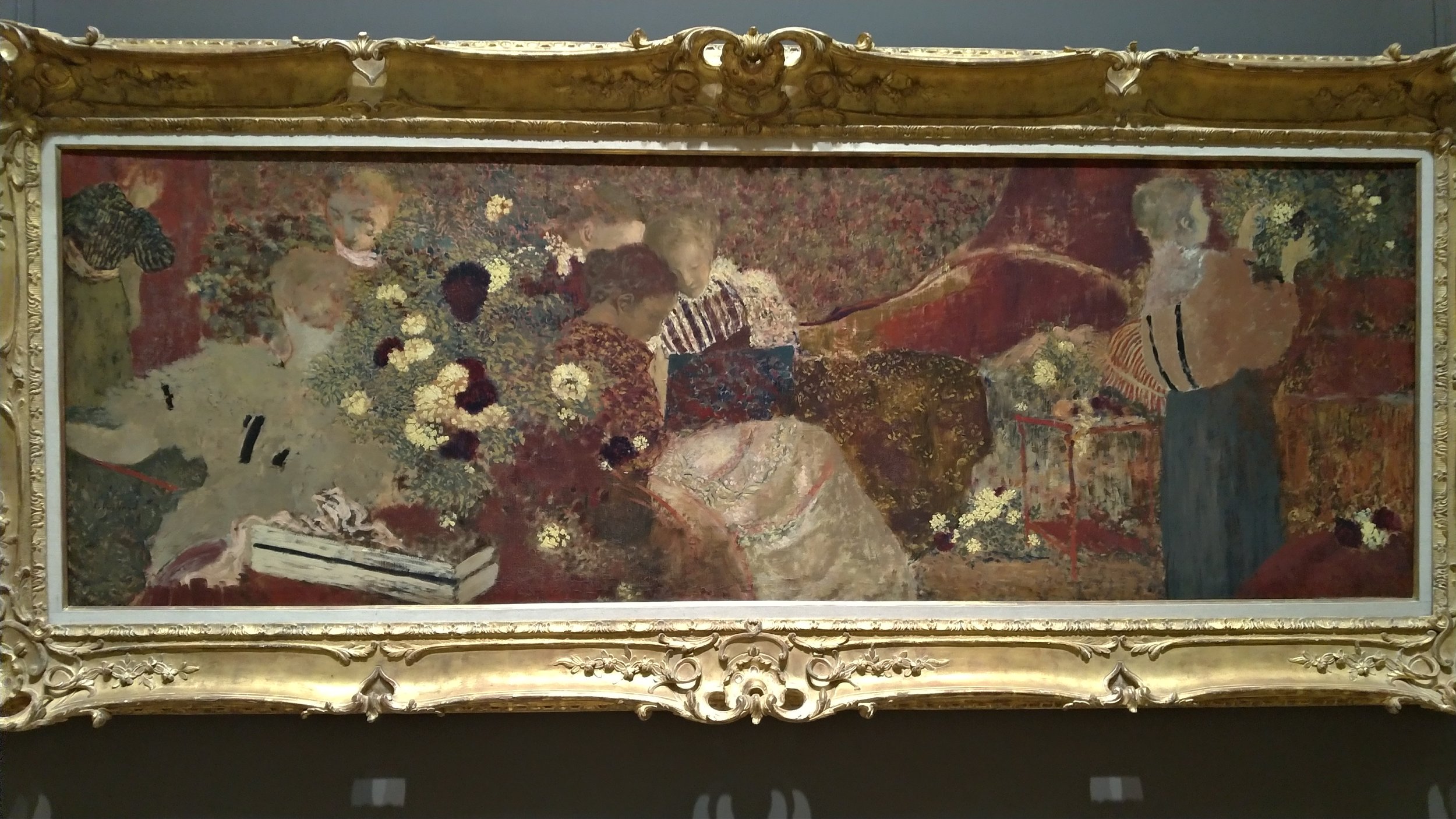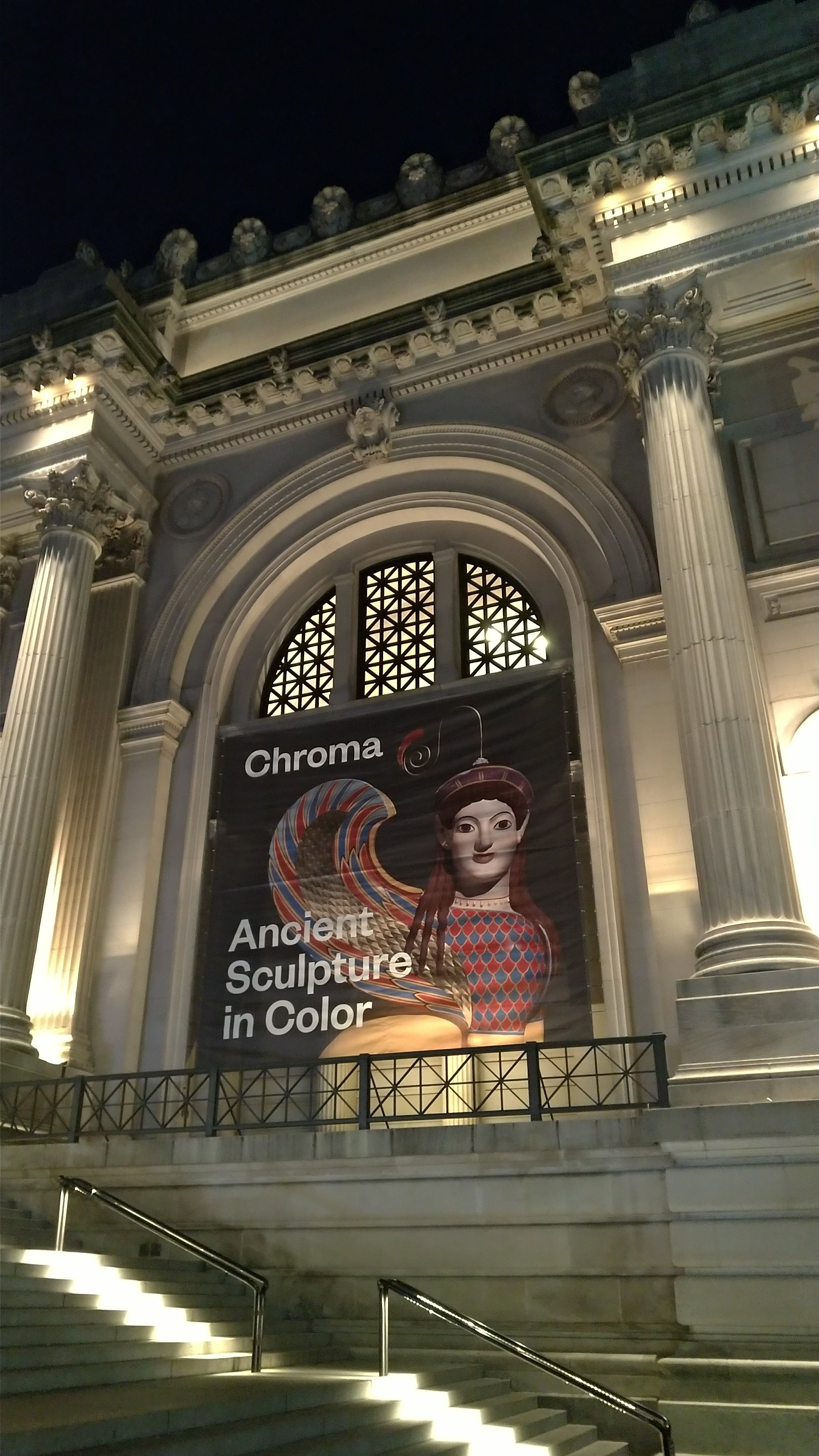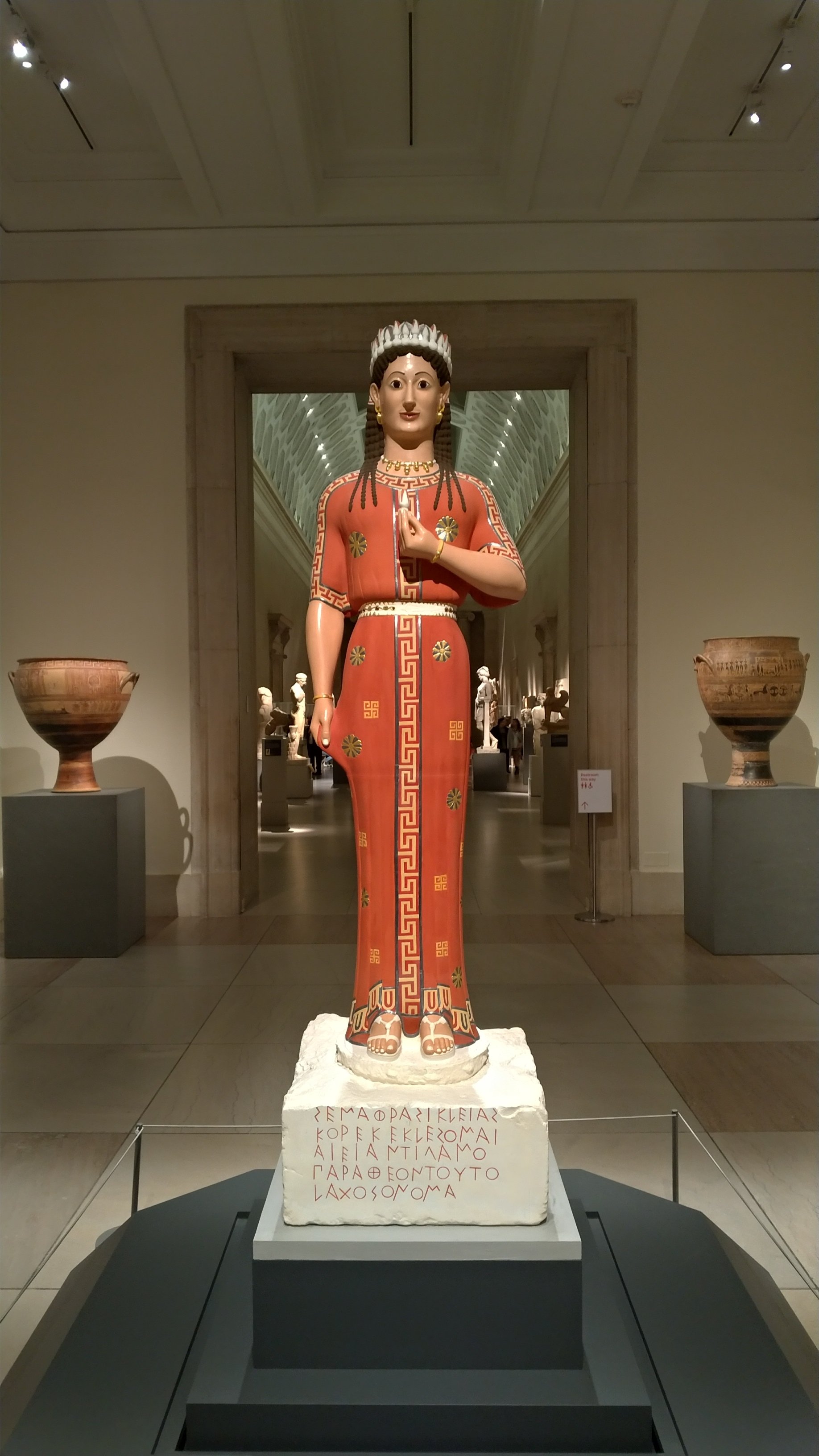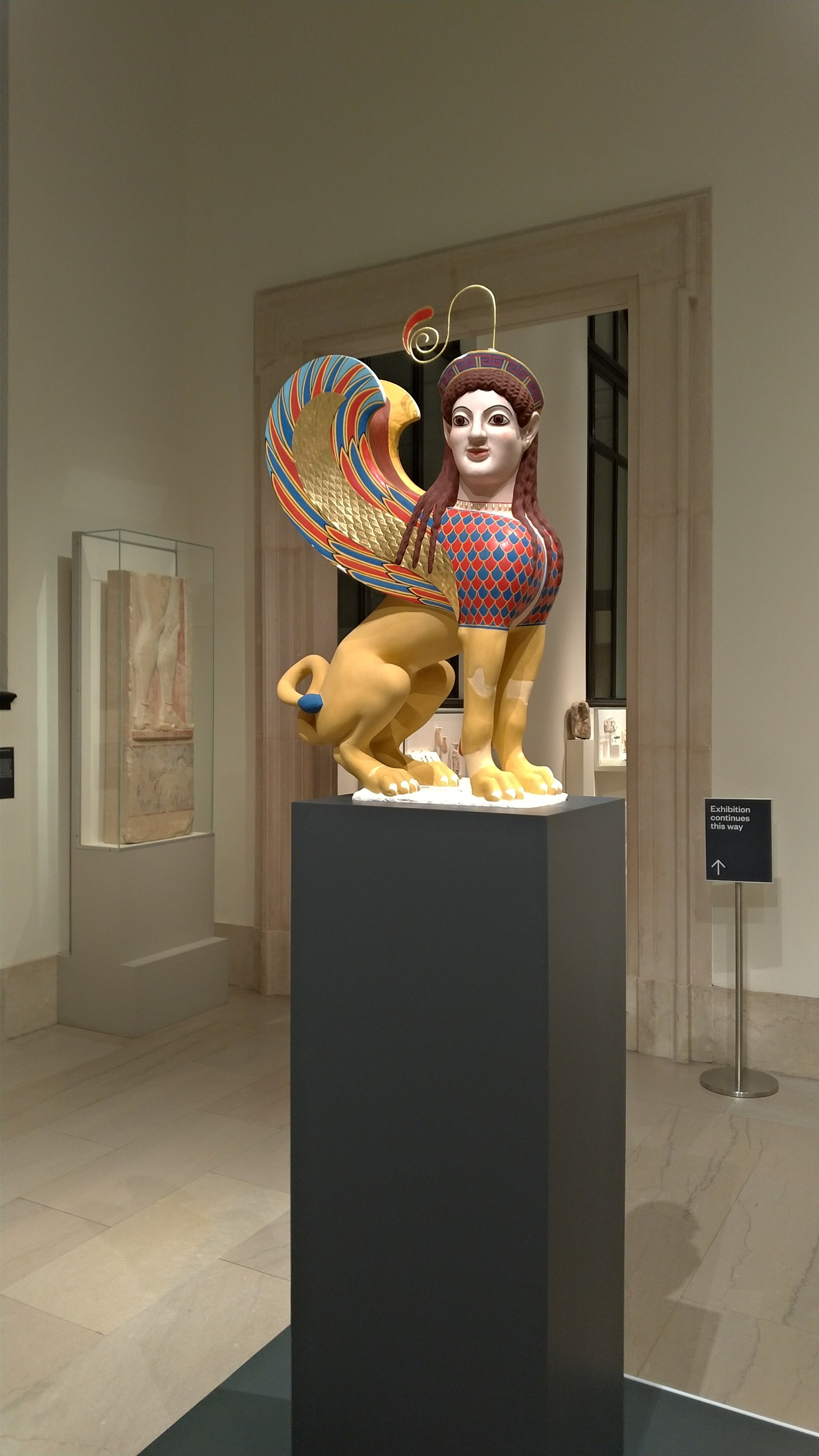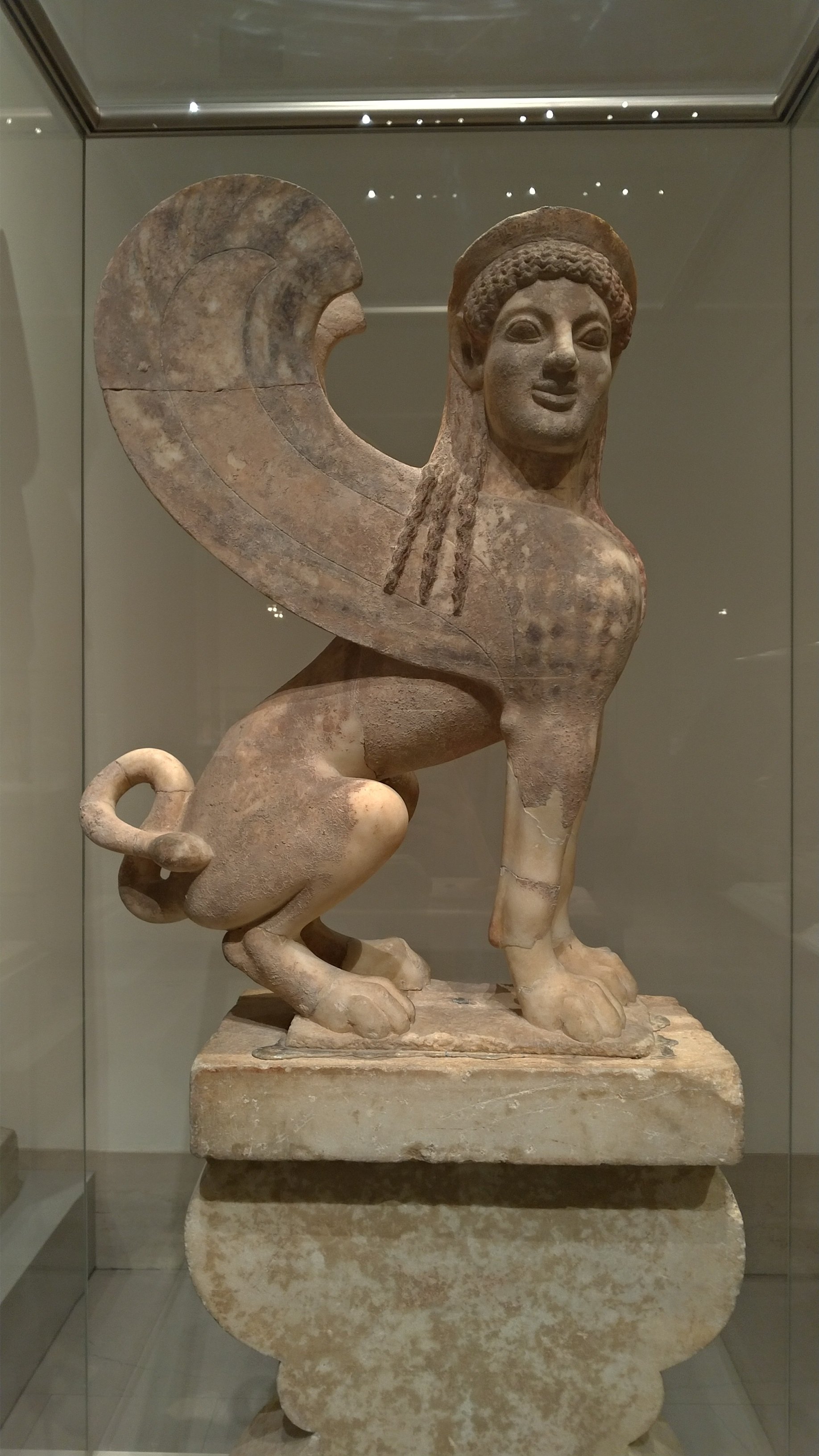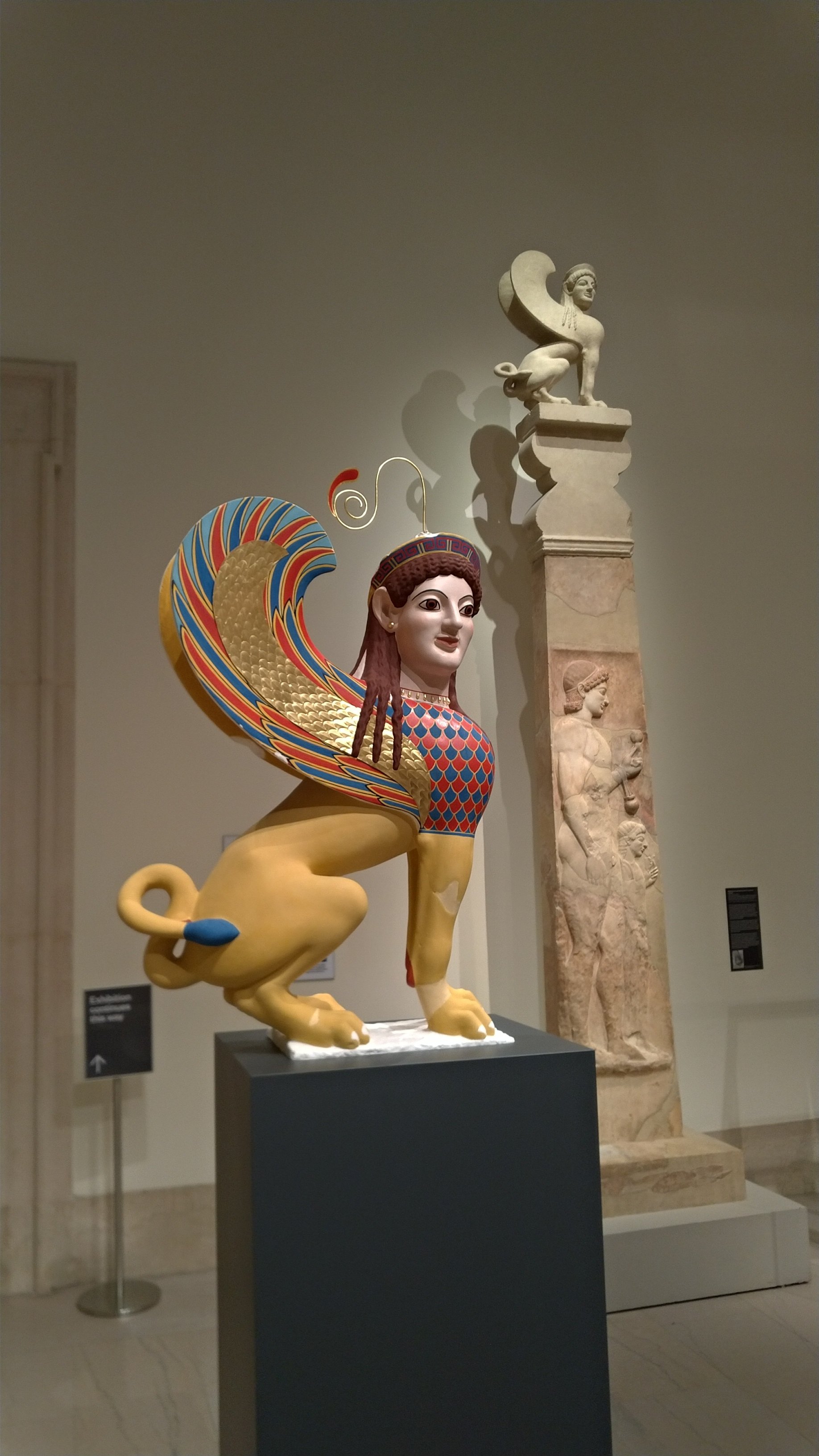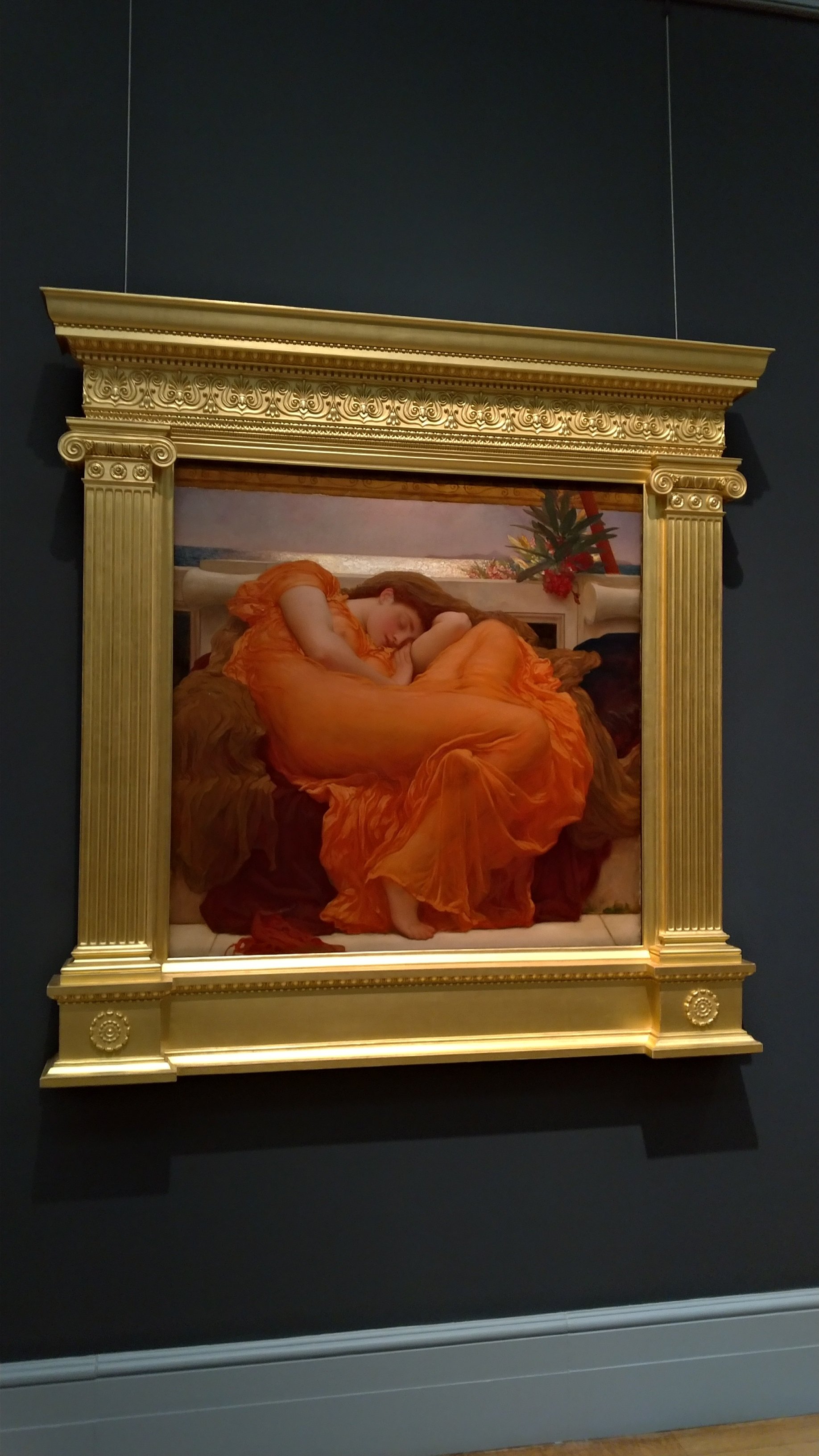Red – as far as your eyes can see. And orange, and yellow. I'm crossing Central Park at the best time of the year, chasing the ochre palette before it's gone with the wind, since at every gust hundreds of leaves swirl around. Anne Bogart's warning echoes inside my head: “You blink, and the opportunity is missed.” Run before it's too late! The autumn shades' choreography carries along not only eyes but also feet and ears – the brick-red crunchy layer subsides at every step, chratch chroutch, chratch chroutch.
I arrive at the Met Museum with no agenda – I let chance lead my way through the wondrous castle of the arts. I take the Greek and Roman Art Galleries, where I am “greeted” by a dazzling, dark-brown haired Kore, dressed in a bold orange-red chiton, while the first word I read is... Chroma (“χρώμα”, the Greek word for “color”, transcribed into the Latin alphabet)!
After detecting and identifying with cutting-edge technology (including ultraviolet and infrared photography) remnants of pigment on ancient sculptures, Dr. Vinzenz Brinkmann (Professor, Head of the Department of Antiquity at the Liebieghaus Sculpture Collection in Frankfurt) and Dr. Ulrike Koch-Brinkmann created copies in the colors they suppose the original works had been made. The polychrome archaic Kore is one of those reconstructions, as part of the exhibition “Chroma: Ancient Sculpture in Color”.
I knew in theory that the white marble treasures we “worship” and admire used to be -in their previous lives- multicolored. But it's a completely different story to make eye contact with the dark-eyed young Phrasikleia, who is shining in her glittering jewelry and in her chiton with the scattered gold and yellow meanders and rosettes. (I would call her chiton's color vermilion, according to what Mrs Epi Protonotariou had taught us in art class at the Mina Aidonopoulou Elementary School in Athens, back in the 1980s; but, as I now find out, an actually “Greeker” word is also available - “κιννάβαρι” [=cinnabar].)
I would never have imagined an Attic sphinx's adorned bust as a red and blue jacquard, and yet the mythical creature looking at us with the characteristic archaic smile on her face is actually dressed in these colors! Her golden wings make her even more majestic than she already is, while her beige torso fools you into thinking you could caress the feline.
Picasso's saying that, when Matisse dies, then Chagall will be the only painter left who truly understands what color is, comes to my mind. Realizing that all three of them are somewhere nearby, I manage to detach myself from the red and black-figured vases, and I climb the stairs towards Modern Art.
Of course I do not remain faithful to my destination, since, on the way to the three modernist artists, I get carried away by Frederic Leighton. The suntanned rosy model/muse sleeping at high noon in “Blazing June” (1895) looks like a descendant of the brunette beauty of the ground floor. Her titian mane is entwined around her archaic-looking peach-colored garment with the delicious ruffles, while the sun is mirrored on the sea in the background.
In the vicinity, I am engulfed by an interior shot: as if on a traveling sequence, the female figures of the scene, with their garnet dresses and light auburn hair, seem to float in an earth-tone symphony, with burgundy and yellow flowers overflowing from vases and floral wallpapers, and springing out through brownish furniture, so that you can't tell where the house ends and where the garden begins – a feast arranged around the central object (and title) of Edouard Vuillard's composition titled “The Album” (also 1895).
On the following day it rained so much and the wind blew so hard that all the leaves finally turned into a deep red, like dried blood, to step on.
This essay first appeared in Greek in the TA NEA newspaper (in print and online) on December 21, 2022.
It was reproduced by HellasJournal.com.
Το κείμενο αυτό πρωτοδημοσιεύτηκε στην εφημερίδα ΤΑ ΝΕΑ (έντυπη και ηλεκτρονική έκδοση) στις 21 Δεκεμβρίου 2022.
Αναδημοσιεύτηκε από το HellasJournal.com.
Για να διαβάσετε το ελληνικό κείμενο, κάντε κλικ εδώ.
